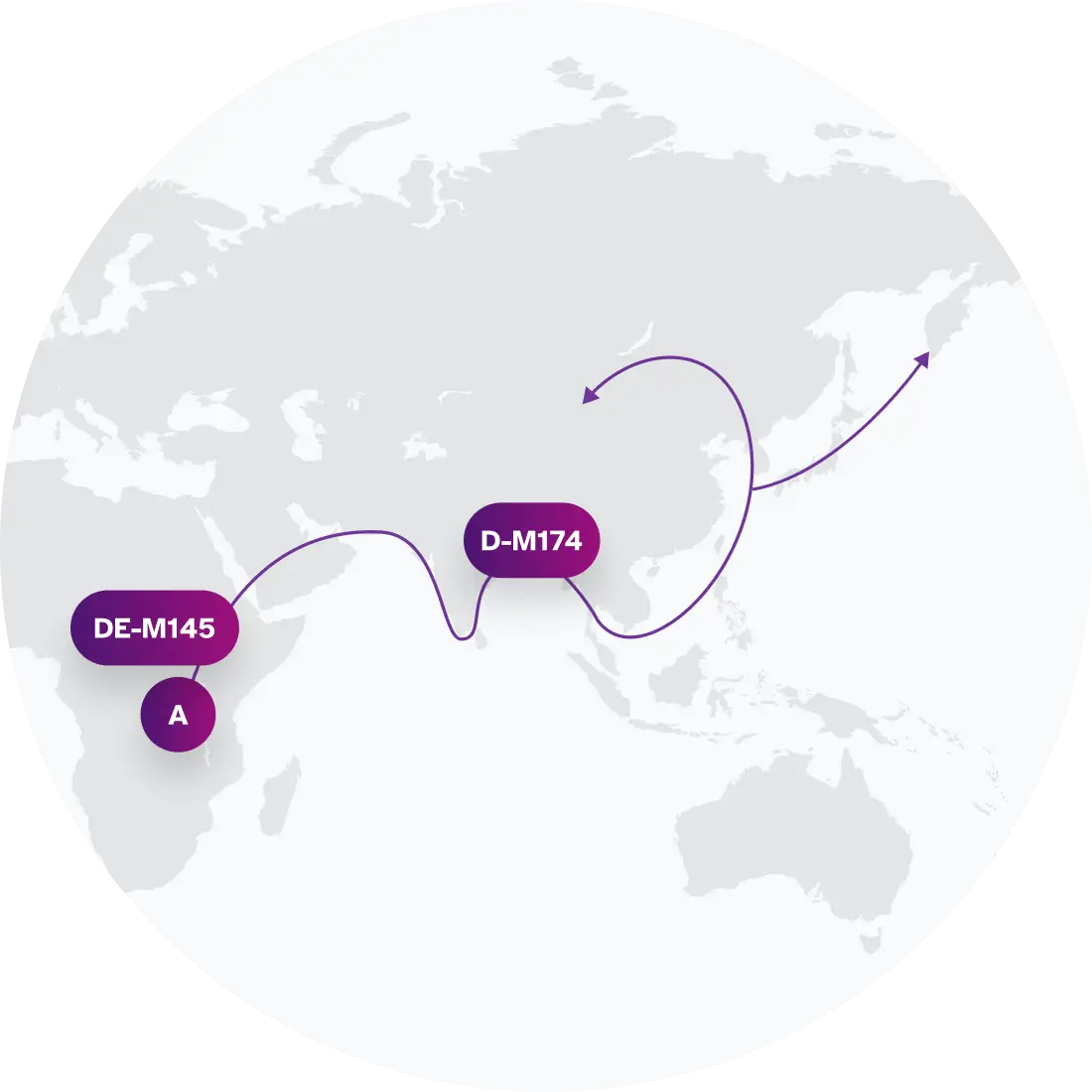Haplogroup D-CTS1964
What is Paternal Haplogroup D-CTS1964?
Haplogroup D-CTS1964, also known as Haplogroup D-M174 (Y Chromosome Consortium long-form label), is a genealogical group of lineages defined by unique genetic markers present on the Y-chromosome. Your paternal haplogroup, or that of your father if you do not have a Y-chromosome, paints a picture of your ancient origins and the migrations of your ancestors. Although your paternal haplogroup reflects just one of your many ancestral lineages, it carries information about that lineage over tens of thousands of years.
Haplogroup D-CTS1964 is descended from haplogroup D-M174. Among 23andMe research participants, haplogroup D-CTS1964 is commonly found among populations in Japan and South Korea.
It's important to note that your haplogroup doesn't define your current ethnic identity; rather, it provides an insight into your deep ancestry on the paternal side.
 Paternal Haplogroup Origins D-M174
Paternal Haplogroup Origins D-M174Top Surnames with Haplogroup D-CTS1964
For surnames with sufficient representation in the data, these percentages represent the frequency with which each surname is found in individuals exhibiting this genetic marker.
Haplogroup D-CTS1964 is linked to some of the Ainu
Haplogroup D-M116.1 is a branch of D that arose in the last 20,000 years and was likely carried into Japan with the initial wave of migrants. Who were these first men to walk across the land bridge to Japan? Today, we call them the Jōmon. For thousands of years, the Jōmon lived by fishing, hunting and gathering the rich resources of the islands. They also left behind distinctive coiled pottery. In fact, their pottery was some of first in the world!Meanwhile rice agriculture was making quite an impression in mainland China and soon spread throughout eastern Asia. These rice agriculturalists arrived in Japan about 2,300 years ago, quickly taking over many parts of the archipelago. As they introduced new paternal lines, haplogroup D-M55 appears to have been mostly replaced. It did, however, survive in the descendants of the Jōmon in more isolated areas of Japan, including Hokkaido in the north and Okinawa in the south.
 The Ainu, descendants of the Jōmon, live in northern Hokkaido today.
The Ainu, descendants of the Jōmon, live in northern Hokkaido today.